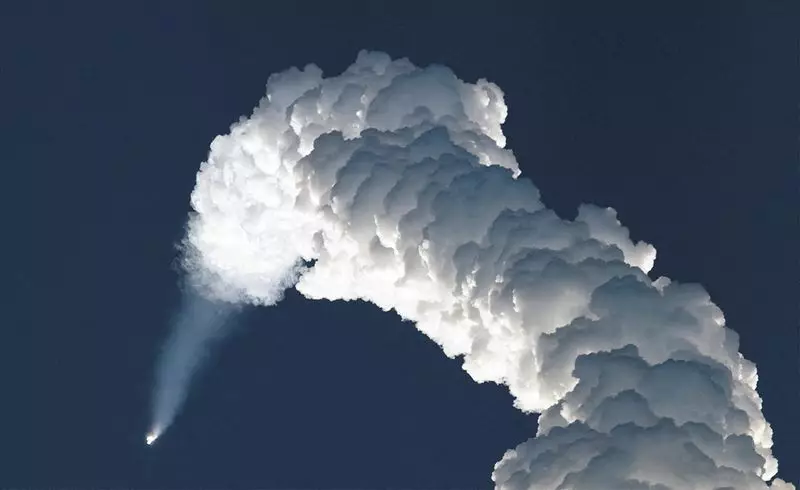The current space launch market is rapidly evolving, driven by technological advancements and the burgeoning demand for satellite deployment. United Launch Alliance (ULA), a collaboration between aerospace giants Boeing and Lockheed Martin, is repositioning itself to better compete with SpaceX’s Starship. The CEO of ULA, Tory Bruno, has signaled critical adjustments to their Vulcan rocket, aimed at capturing an increasingly lucrative sector—low Earth orbit (LEO) satellite launches.
In light of SpaceX’s aggressive expansion in the satellite launch arena, particularly with its Starlink internet project, ULA has conducted an extensive trade study to ensure its Vulcan rocket can be optimized for LEO missions. The modifications being planned are significant; ULA’s CEO conveyed the intent to enhance the rocket’s mass capacity to better compete against rivals. By introducing configurations such as a “Vulcan Heavy,” a variant that combines three core boosters, ULA seeks to increase its capability significantly. Furthermore, Bruno hinted at unconventional engine placements, showcasing ULA’s commitment to innovation in its rocket designs.
The need for such adaptations is underscored by the financial prospects associated with LEO missions. The proliferation of satellites for broadband internet services has turned this domain into a goldmine, intensifying the competition among launch providers. SpaceX’s Starlink program exemplifies this by launching thousands of satellites, effectively changing the dynamics of satellite connectivity.
Understanding the competitive landscape requires not only acknowledging ULA’s enhancements but also dissecting the capabilities of SpaceX’s Starship. While Starship is engineered primarily for crewed missions beyond Earth, it doubles as a powerhouse capable of deploying satellites efficiently. Elon Musk’s plans to further enhance Starship’s capabilities, including increasing its thrust and refining landing technologies, add layers of complexity to ULA’s challenge in this arena.
Bruno’s estimates suggest that ULA will not encounter SpaceX directly in the LEO launch market for several years, implying that both companies are operating on different timelines. While ULA is gearing up to enhance the Vulcan rocket, SpaceX is aggressively testing its Starship, involved in a rigorous cycle of development and iteration that often favors rapid feedback and quick adaptation.
The race to dominate the LEO market is not limited to just SpaceX and ULA; other players, including Amazon with its Kuiper internet satellite project, are also entering the fray. ULA has secured significant contracts with Amazon, leveraging Vulcan as a cornerstone of its strategy against the likes of Starlink. However, as companies vie for leadership positions in the satellite internet space, they are also accumulating diverse launch agreements across multiple platforms, further increasing competition and potential synergies.
The launch pricing strategy is another critical factor in this competitive landscape. ULA’s Vulcan, with a starting launch cost slightly above $110 million, positions itself against SpaceX’s Falcon 9. This pricing difference becomes crucial as firms consider cost-efficiency alongside performance metrics when selecting launch providers. The availability of a record 70 missions in ULA’s order book emphasizes the pressing need for the company to achieve operational reliability and frequency with the Vulcan rocket.
As ULA embarks on augmenting its rockets and solidifying partnerships, the backdrop of the space launch industry remains one of constant evolution. Existing market leaders must adapt swiftly to technological innovations while attending to the burgeoning demands for satellite launches. ULA’s response reflects an understanding that remaining stagnant is not an option in this fiercely competitive environment.
The landscape of space exploration, particularly in the satellite domain, is witnessing unprecedented growth. ULA’s strategic transformative steps with the Vulcan rocket could pave the way for it to not only compete but also thrive amidst formidable competitors like SpaceX. As both companies continue to navigate their paths, the unfolding of these dynamics will be closely watched, not just by industry insiders but also by the future consumers of space-based technologies.
ULA’s proactive stance on evolving its Vulcan rocket demonstrates a commitment to remain relevant in an industry defined by rapid advancements. As it strives to meet the challenges posed by SpaceX’s Starship, the broader landscape of satellite launches will undoubtedly witness intensified competition that may redefine how we approach connectivity from space.

